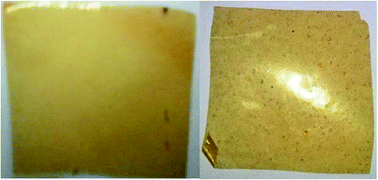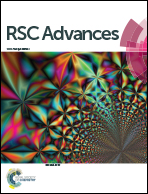Improvement of proton conductivity in nanocomposite polyvinyl alcohol (PVA)/chitosan (CS) blend membranes
Abstract
The composite membranes are prepared with poly(vinyl alcohol) (PVA), chitosan (CS) and montmorillonite (MMT) using a solution casting technique where the chemical composition of CS and MMT in the prepared composite membranes are varied in steps of 5 wt%. The structural properties, thermal stability, hydrolytic stability and transport properties of the prepared membranes were investigated using various characterization methods, like Fourier transform infrared spectroscopy (FT-IR), X-ray diffraction (XRD), scanning electron microscopy (SEM), thermogravimetric analysis (TGA), water uptake, methanol uptake, planner swelling, thickness swelling, ion exchange capacity (IEC) and proton conductivity measurements. It is noticed that the addition of both CS and MMT into the PVA polymer enhances the mechanical, thermal and transport properties of the prepared composite membranes. All the membranes are homogenous, as revealed by the XRD studies. In the present work, ionic transport studies of PVA/CS/MMT membranes were analysed and the membrane PCH05 exhibited the best electrical properties of all the prepared membranes. It is expected that PCH05 membrane will serve as a good candidate for use in direct methanol fuel cells (DMFC) in the near future.


 Please wait while we load your content...
Please wait while we load your content...